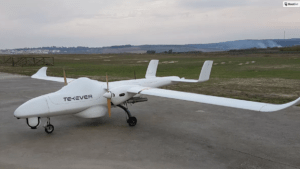
Offering more than 16 hours of flight time, the AR line is designed for maritime surveillance, pollution monitoring, in addition to supporting the fight against trafficking, illegal immigration and illegal fishing.
“In addition to developing cutting-edge technology, we’ve had the opportunity to be deeply involved in hundreds of maritime surveillance missions, operating our systems to provide our customers with actionable, real-time intelligence” TEKEVER CEO Ricardo Mendes said. He added:
“Our operational teams now have thousands of hours of experience across our platforms, make our products simpler and safer to use, more mission effective and operationally more efficient. We’re working every day with security forces and aviation authorities in Europe and abroad, bringing them this accumulated experience to help make unmanned systems a wide-spread reality in support of non-military operations throughout the world.”
Surveillance Growth
In 2017, TEKEVER snagged an $85 million contract from the European Maritime Safety Agency to “create the first European maritime surveillance and environmental monitoring system based on drones.” The contract dovetails into a larger program to provide the EU Coastguard and environmental protection activities with drone technology.
The same year, TEKEVER partnered with thinktank Photonics21 and Europe’s Flying ultrA-broadband single-shot Infra-Red Sensor consortium (FLAIR) to create drone-based solutions to clear the air – literally – following toxic disasters. The program deploys fixed-wing drones to detect and measure toxic fumes in the aftermath of deadly disasters such as wildfires, chemical fires or volcanic eruptions, allowing ground crews to analyze critical air-quality data in real-time.
“Part of our mission is to help detect situations where lives can be saved and provide the authorities with intelligence that can prevent further illegal activities,” Mendes said. “During the pandemic, we’ve witnessed a meaningfully increase in demand for our products and services. COVID-19 highlights the importance of unmanned technology, as it provides the authorities with tools that can be effective even while operated from a distance in safe environment.”
Jason is a longstanding contributor to DroneLife with an avid interest in all things tech. He focuses on anti-drone technologies and the public safety sector; police, fire, and search and rescue.
Beginning his career as a journalist in 1996, Jason has since written and edited thousands of engaging news articles, blog posts, press releases and online content.
Email Jason
TWITTER:@JasonPReagan
Subscribe to DroneLife here.